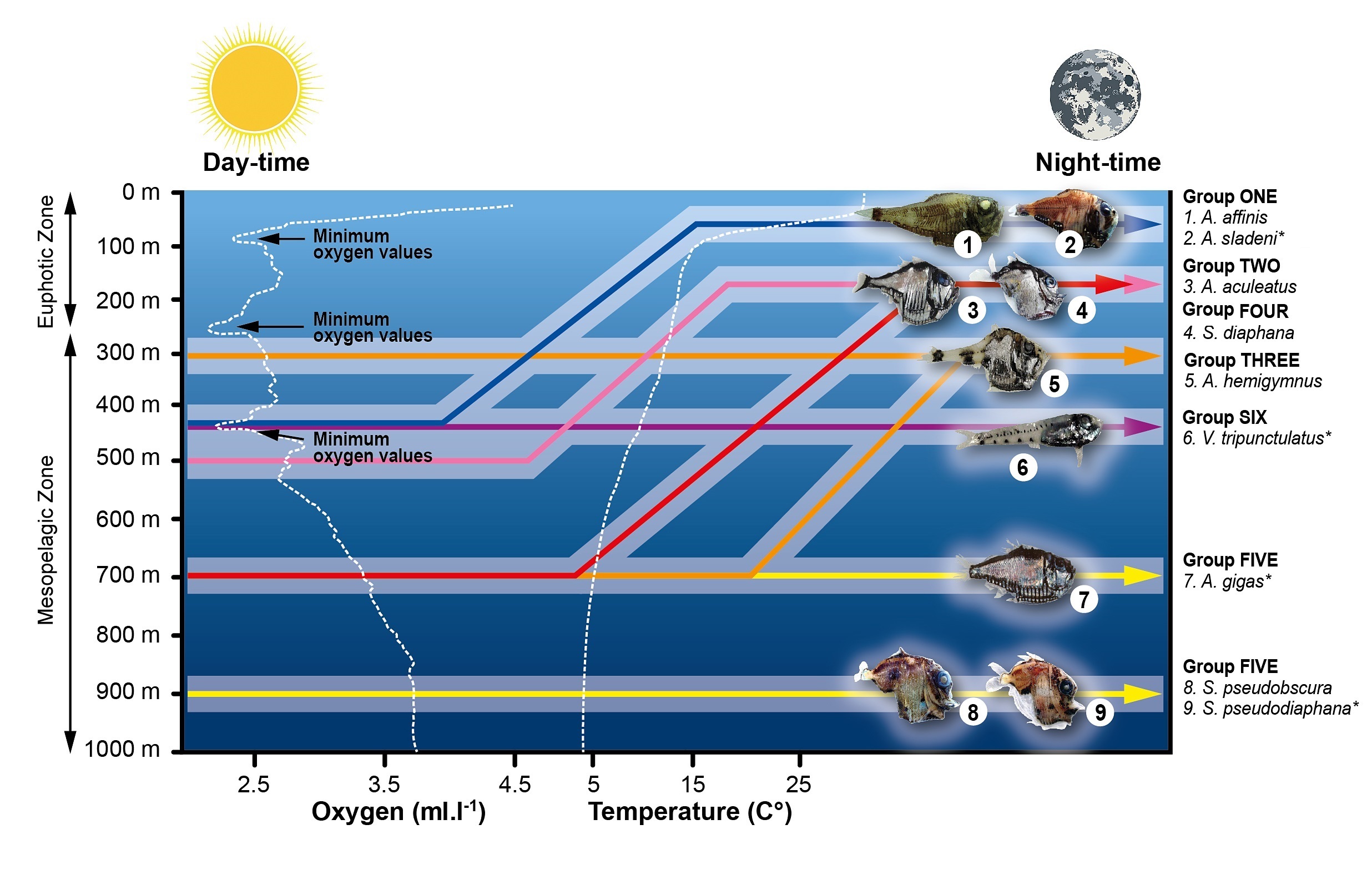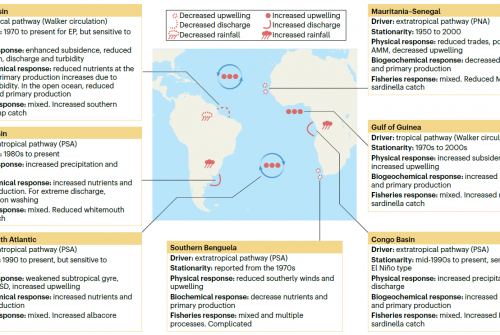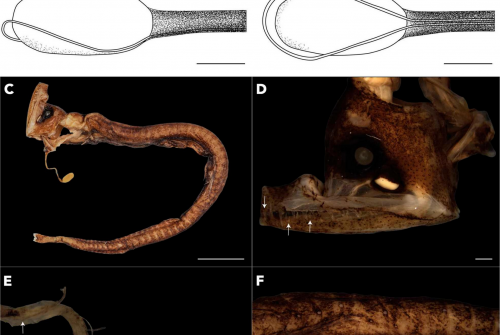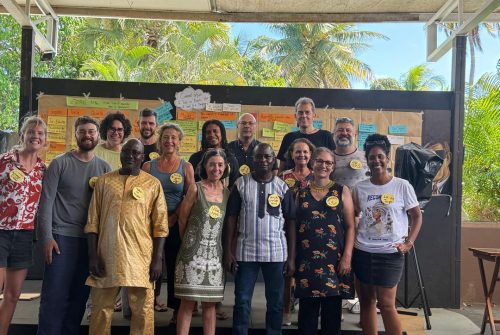
Species of the family Sternoptychidae (hatchetfishes) occur worldwide and play critical roles by sequestering carbon, recycling nutrients, and acting as a key trophic link between epipelagic primary consumers and higher trophic levels in marine ecosystems. Nevertheless, basic knowledge on their ecology is still lacking and their functional ecology remains understudied with respect to composition, organization, functions and environment interactions. Here we integrated comprehensive information collected in the western Tropical Atlantic on the diversity, abundance, distribution and trophic ecology of hatchetfishes, including physicochemical features of their habitats and extensive carbon and nitrogen stable isotope data on its main prey groups. On this basis we defined five functional groups of hatchetfishes with different diet preference, isotopic composition, and vertical abundance peaks and reveal a possible high resource partitioning. Additionally, these species might have a different feeding tie chronology. Hence, hatchetfishes segregate in different ecological groups responding differently to environmental constraints including oxygen concentration and presenting diverse functional roles. As deep-sea species that migrate to epipelagic waters, hatchetfishes may play a key role in the transfer of sub-surface photoassimilated carbon to deeper waters, a pathway through which the effects of climate change at the surface are transferred to the deep ocean. Moreover, as consumers of gelatinous organisms, these species convert “gelatinous energy” into “fish energy” readily usable by higher trophic levels, including endangered and commercially important species. This is a crucial trophic relationship that has been historically underestimated due to methodology limitations (e.g., quickly digested gelatinous organisms were probably underestimated in previous studies, based solely on stomach contents). Considering in ecosystem models this trophic relationship, as well as the functional organization of hatchetfishes, is important to properly answer key ecological questions including resource use, carbon transportation, and influence of mesopelagic community in climate change process.
doi.org/10.1016/j.pocean.2020.102389
Reference
Eduardo L.N., Bertrand A., Mincarone M.M., Silva L.V.S., Frédou T., Assunção R., Silva A., Ménard F., Schwamborn R., Le Loc’h F., Lucena-Frédou F. 2020. Hatchetfishes (Stomiiformes: Sternoptychidae) biodiversity, trophic ecology, vertical niche partitioning and functional roles in the western Tropical Atlantic. Progress in Oceanography, 187: 102389.







